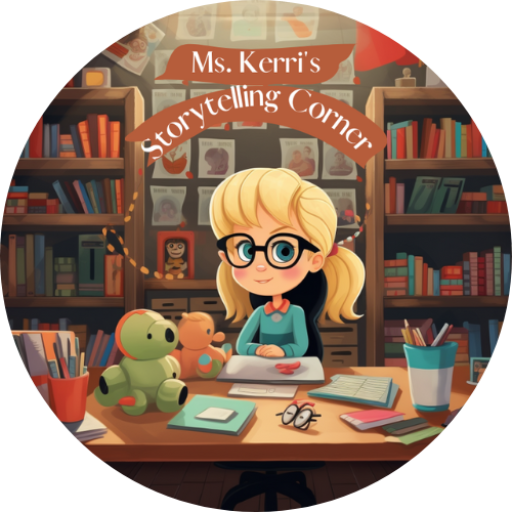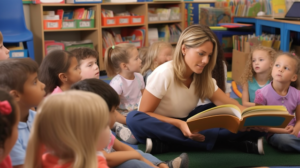Christmas Carols and Cursive: Enhancing Reading Skills with Holiday Cheer
Table of Contents
- Overview
- The Importance of Reading Skills
- The Role of Christmas Carols
- The Role of Cursive Writing
- Benefits of Christmas Carols
- Improving Vocabulary
- Enhancing Comprehension
- Developing Phonemic Awareness
- Benefits of Cursive Writing
- Improving Handwriting
- Boosting Cognitive Skills
- Enhancing Memory
- Conclusion
Overview
The Importance of Reading Skills
Reading skills are crucial for academic success and personal development. Strong reading skills enable individuals to comprehend written information, communicate effectively, and think critically. Research has shown that individuals with good reading skills have higher levels of literacy, which is essential for navigating the modern world. Additionally, reading helps expand vocabulary, improve concentration, and stimulate imagination. By fostering a love for reading, individuals can unlock a wealth of knowledge and opportunities.
The Role of Christmas Carols
Christmas carols play a significant role in enhancing reading skills. They provide an engaging and enjoyable way for children to practice reading. By singing along to the lyrics, children develop their vocabulary as they encounter new words and phrases. Additionally, the repetitive nature of carols helps to improve comprehension by reinforcing key concepts and themes. Furthermore, the rhyming patterns in carols promote phonemic awareness, as children learn to recognize and manipulate sounds in words.
The Role of Cursive Writing
Cursive writing plays a significant role in enhancing reading skills. It not only improves handwriting but also boosts cognitive skills and enhances memory. Research has shown that learning cursive can help individuals retain information better, as the act of writing in cursive engages different parts of the brain. Additionally, cursive writing allows for faster and more efficient note-taking, which can aid in the comprehension of written text. By incorporating cursive writing into educational activities, students can develop a deeper understanding of language and improve their overall reading abilities.
Benefits of Christmas Carols

Improving Vocabulary
Christmas carols can play a significant role in improving vocabulary skills. By listening to and singing along with carols, children are exposed to a wide range of words and phrases. This exposure helps them expand their vocabulary and learn new words in a fun and engaging way. Additionally, learning the lyrics of different carols can also enhance word recognition and pronunciation. Research has shown that music can have a positive impact on language development, making Christmas carols a valuable tool for improving vocabulary.
Enhancing Comprehension
One of the key benefits of incorporating Christmas carols into reading activities is that it can significantly enhance comprehension skills. When children are exposed to the lyrics of carols, they are exposed to a variety of vocabulary words and phrases. This exposure helps them expand their vocabulary and understand the meaning of words in context. Additionally, singing along to carols can improve reading fluency and rhythm, which are essential for understanding and interpreting written texts. By engaging in cursive writing exercises related to carol lyrics, children can also strengthen their comprehension skills by visually connecting the letters and words in a flowing manner.
Developing Phonemic Awareness
Developing phonemic awareness is a crucial aspect of reading skills. Christmas carols can play a significant role in improving phonemic awareness as they often involve rhyming and wordplay. By listening to and singing along with carols, children can learn to identify and manipulate individual sounds in words. Additionally, cursive writing can also contribute to developing phonemic awareness. When children practice writing in cursive, they become more aware of the connection between sounds and letters, which can improve their ability to decode and spell words. Overall, both Christmas carols and cursive writing provide engaging and effective ways to enhance phonemic awareness, a fundamental skill for reading success.
Benefits of Cursive Writing

Improving Handwriting
Improving handwriting is one of the key benefits of cursive writing. By practicing cursive, individuals can develop a more fluid and legible writing style. Cursive writing involves connecting letters, which helps improve the overall speed and efficiency of writing. Additionally, cursive writing requires the writer to pay attention to letter formation and spacing, leading to neater and more organized writing. Legible and neat handwriting is important for effective communication and can leave a positive impression on readers. Overall, cursive writing can greatly enhance an individual’s handwriting skills.
Boosting Cognitive Skills
Cursive writing not only improves handwriting but also boosts cognitive skills. When children learn to write in cursive, they engage both sides of their brain, which enhances their ability to think critically and problem-solve. Research suggests that cursive writing can improve overall cognitive function, including memory, attention, and creativity. By practicing cursive writing, students develop their cognitive skills while also honing their penmanship.
Enhancing Memory
In addition to improving handwriting and boosting cognitive skills, cursive writing also has the potential to enhance memory. Research suggests that the act of writing in cursive activates multiple regions of the brain, including those associated with memory and learning. When individuals write in cursive, they engage in a continuous flow of movement, which can help improve memory retention. This is particularly beneficial when it comes to learning and remembering new information, such as vocabulary words or important concepts. By incorporating cursive writing into reading activities, individuals can further enhance their memory skills while enjoying the festive spirit of the holiday season.

Conclusion
In conclusion, the fusion of Christmas carols and cursive writing serves as a dynamic duo in the realm of enhancing children’s reading skills. Recognizing the paramount importance of strong reading skills for academic achievement and personal growth, this article has delved into the significant roles played by both Christmas carols and cursive writing.
Christmas carols, with their melodic tunes and festive lyrics, provide a captivating avenue for children to immerse themselves in language learning. The rhythmic patterns and repetitive nature of carols contribute to the enrichment of vocabulary, improvement of comprehension, and development of essential phonemic awareness. By embracing the joy of singing along to these seasonal tunes, young readers not only enhance their linguistic abilities but also foster a genuine love for reading.
On the other hand, the incorporation of cursive writing into educational activities brings a unique dimension to the journey of improving reading skills. Beyond the refinement of handwriting, cursive writing engages various cognitive faculties, promoting critical thinking, problem-solving, and overall cognitive function. Furthermore, the act of writing in cursive has the potential to boost memory retention, providing an additional layer of benefit to the learning process.
By synergizing the benefits of Christmas carols and cursive writing, educators and parents can create a holistic approach to literacy development during the holiday season. From expanding vocabulary and refining comprehension to nurturing phonemic awareness and enhancing cognitive skills, this festive integration of music and handwriting provides a joyful and effective pathway to fostering lifelong readers. As we celebrate the magic of Christmas, let us also celebrate the magic of learning, ensuring that every child’s journey into the world of words is as enchanting as the holiday season itself. Looking for more children’s free activities and crafts? Look here.

Ms. Kerri’s Corner provides a exciting virtual space for preschool learning. Through a variety of engaging activities, she exposes young minds to early math, literacy, science and social-emotional skills in a developmentally appropriate way. Centers for blocks, art, books and music allow children to explore hands-on learning at their own pace. Guided lessons subtly introduce number sense, letter sounds and narrative thinking. Careful observation gives insight into each child’s progress across domains. Viewers are also invited to participate, reinforcing that their ideas are valued. By making learning fun yet purposeful, Ms. Kerri lays the groundwork for future academic success while fostering creativity and imagination. Her program offers preschoolers valuable screen-based learning experiences.




